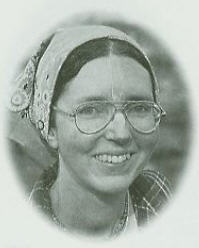
Hare Krsna Devi Dasi
PART 1
According to Vedic civilization, a qualified ksatriya monarch is given the same respect as the Lord because he represents the Lord by giving protection to the prajas [citizens]. Modern elected presidents cannot even give protection from theft cases, and therefore one has to take protection from an insurance company.
Srila Prabhupada, Srimad-Bhagavatam 3.6.31, Purport
VEDIC SOCIETY takes a different approach to crime control than modern society. Today's methods are "reactive" and rely on advanced technology, whereas the Vedic methods stress sociological and spiritual programs intelligently designed to prevent crime from happening in the first place.
Because I live in America, I'll talk about fighting crime here. But since crime is a worldwide problem, much of what I say applies everywhere.
The Iron Triangle
If crime is a problem in America, the problem is not for a lack of spending to fight crime. Just to run our prisons costs $25 billion a year. According to David C. Anderson, an authority on criminal justice and other urban issues, the total yearly cost of fighting crime, including trials, incarceration, and police salaries, is about $74 billion.
What is the result of this immense expenditure? In "The Crime Funnel," an article in The New York Times Magazine (12 June 94), Anderson explains that for the 35 million crimes committed in the U.S. each year (25 million of them serious), 3.2 million people are arrested, 1.9 million are convicted, and only 500,000 actually go to prison. So, as Srila Prabhupada suggests, potential victims of crime get little benefit from the government's expensive efforts at crime control.
But other groups do benefit. In a front-page Wall Street Journal article entitled, "Making Crime Pay" (12 May 94), Paulette Thomas describes the business and political interests who profit from the crime industry:
Americans' fear of crime is creating a new version of the old military-industrial complex, an infrastructure born amid political rhetoric and a shower of federal, state and local dollars. As they did in the Eisenhower era, politicians are trying to outdo each other in standing up to the common enemy; communities pin their economic hopes on jobs related to the buildup; and large and small businesses scramble for a slice of the bounty. These mutually reinforcing interests are forging a formidable new "iron triangle" similar to the triangle that arms makers, military services and lawmakers formed three decades ago.
And even though the vast majority of crimes go unpunished, the article says, "the U.S. already has the highest percentage of its population behind bars of any nation in the industrialized world about 1.4 million people."
Ironically, unemployment, a big contributor to crime, also fuels enthusiasm for more prisons. For example, a New York Times article, "Residents of Dying California Town See Future in a Prison" (8 May 94), explains how residents of a struggling California lumber town pin their economic hopes on building a maximum-security prison at the base of beautiful Mount Shasta.
What is the meaning of a system of crime control treatment that does almost nothing to protect victims but makes businesses wealthier and politicians more powerful? What is the meaning of a society where citizens are so desperate for work that they pray a prison will move into the neighborhood?
Surely such a society must be insane. What is the alternative to this insanity? We can learn a lot from the Vedic social model.
Whom to Protect
In the Vedic society, crime control focuses not so much on clever ways to catch and incarcerate the bad guys but on whom to protect. In the Vedic model, potential victims are never forgotten in multi-billion-dollar "crime fighting" crusades.
And who are the first to be protected? Srila Prabhupada lists five groups and explains the importance of their contribution to society:
In the glorious days before the advent of the Age of Kali, the brahmanas, the cows, the women, the children, and the old men were properly given protection.
1. The protection of brahmanas maintains the institution of varna and asrama, the most scientific culture for attainment of spiritual life.
2. The protection of cows maintains the most miraculous form of food, i.e., milk, for maintaining the finer tissues of the brain for understanding the higher aims of life.
3. The protection of women maintains the chastity of society, by which we can get a good generation for peace, tranquility, and progress of life.
4. The protection of children gives the human form of life its best chance to prepare the way of liberty from material bondage. …
5. The protection of old men gives them a chance to prepare themselves for better life after death.
Srimad-Bhagavatam 1.8.5, Purport
If all these groups are free from fear and harassment, they can contribute their full productive and creative potential in society. Then society will be peaceful and virtually crime free. If none of these groups is protected as in today's society how can there possibly be anything but increasing anarchy and violence?
So how does Vedic culture protect these valuable members of society? Does it use high-tech blinding foam? Smart guns? Spiked barrier strips?
In Vedic society, providing defense begins with the brahmanas, the intelligentsia. But instead of working as material scientists researching a new laser gun, the intellectual brahmanas work as spiritual scientists researching the scriptures. Their aim: to properly guide society's leaders in varnasrama, the scientific division of society for spiritual advancement.
As we shall see next time, spiritual sociology rather than material technology is the first line of defense in protecting society from crime.
Hare Krsna Devi Dasi, an ISKCON devotee since 1978, is co-editor of the newsletter Hare Krsna Rural Life.
